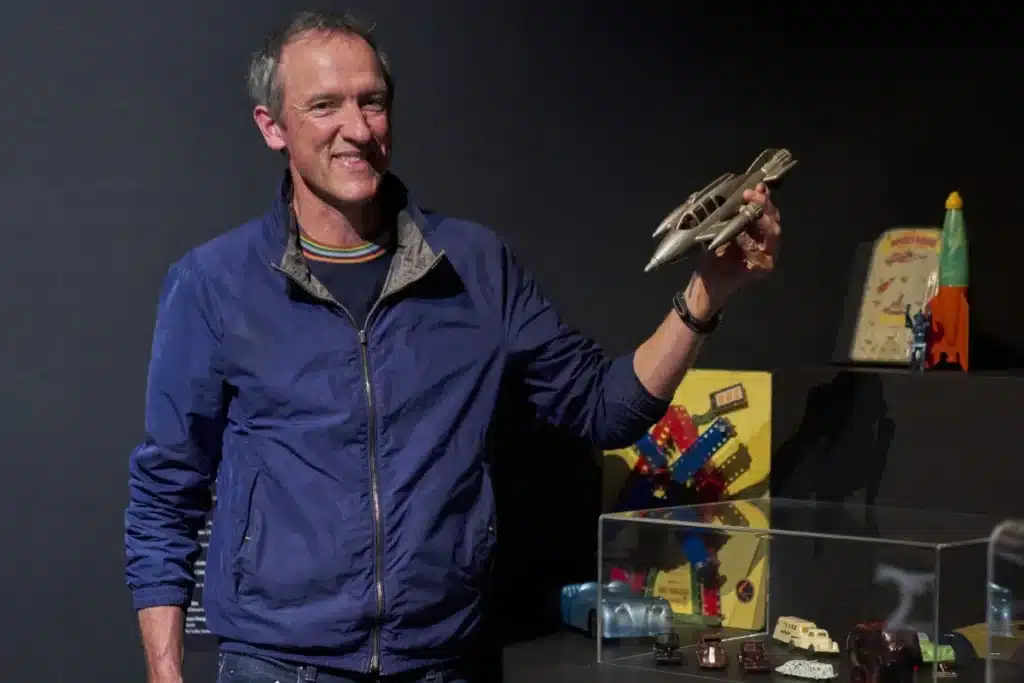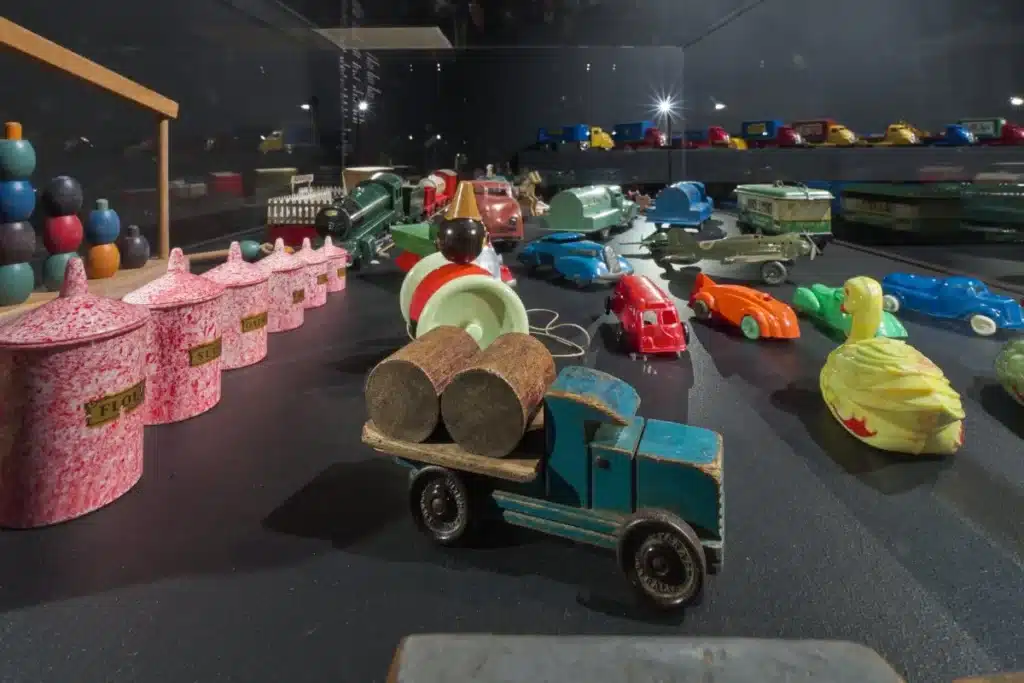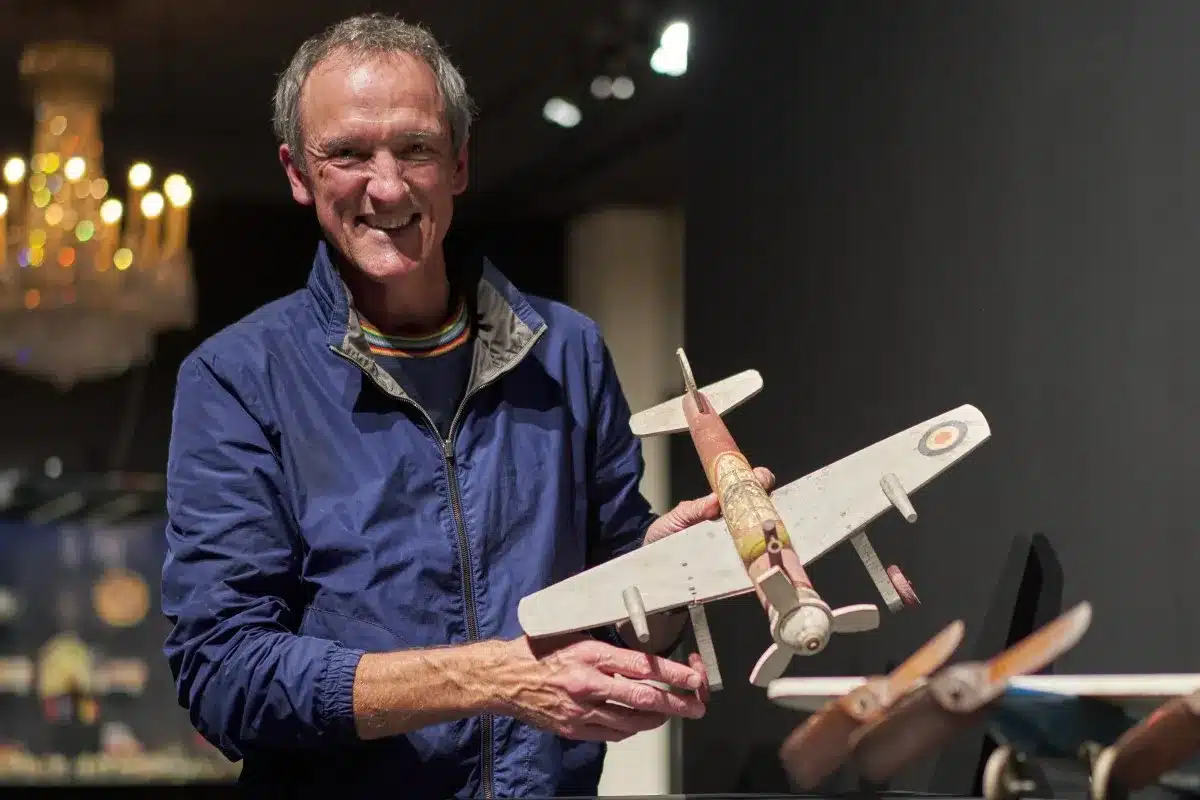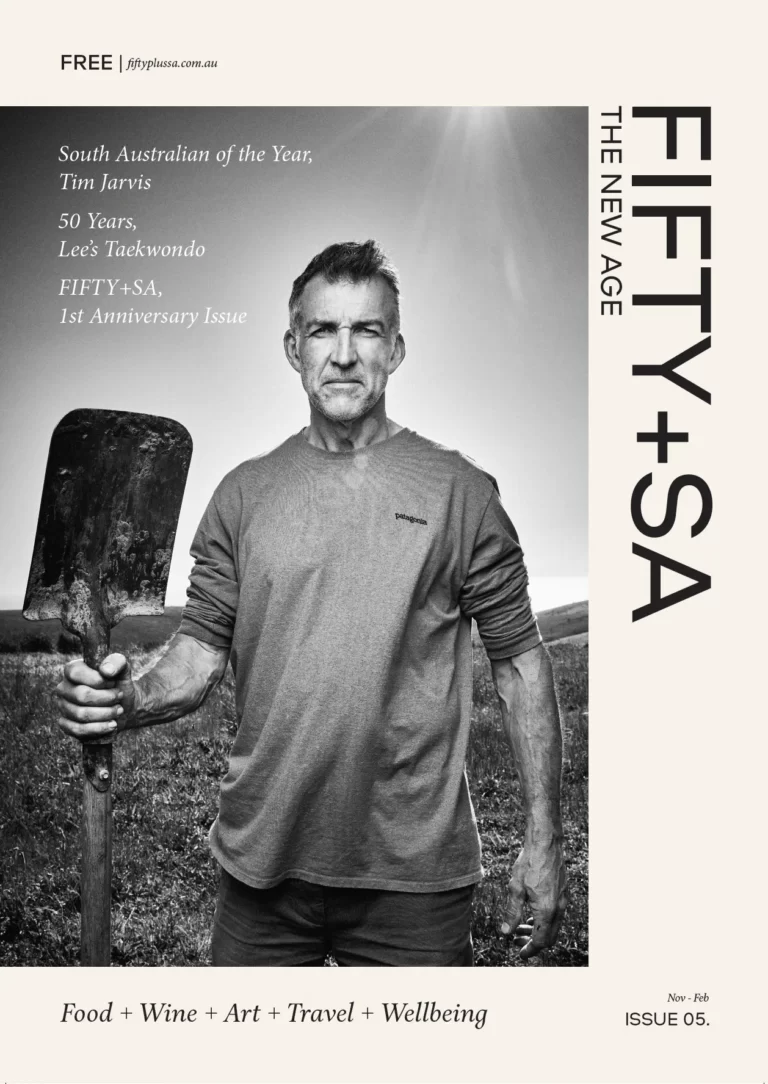In the world of antique toy collecting, few names resonate as deeply as Luke Jones. His fascination began at the tender age of nine, with a vivid memory of acquiring his first piece—a captivating Coca-Cola truck. Over four decades, Luke’s collection has flourished, encompassing toys from the 1880s to the 1960s. Each piece holds a unique story, reflecting the evolution of the toy industry and the rich diversity of childhood memories. Now, visitors to the David Roche Gallery can experience this journey through the exhibition, Australian Toys 1880-1965: The Luke Jones Collection. Luke shares insights into his collecting criteria, the historical significance of his toys, and the future dreams for his treasured collection.
Q. Luke, can you tell us about the moment you first realised you wanted to start collecting antique toys? What drew you to that particular Coca-Cola truck?
I had an after school job selling The News tabloid newspapers on the streets of North Adelaide. I was saving up my money and I wanted to start a collection of something. When Small and Whitfield auctioneers had a toy auction, I saw this Coca-Cola truck and was very very taken by it. It’s a really beautiful toy – colourful and well detailed and quite big. Luckily I had the winning bid (actually my father who was bidding for me, as I was only 9!).
Q. Your collection spans from the 1880s to the 1960s. What criteria do you use to choose which toys to add to your collection?
I like toys to be in as good condition as I can find them, and most definitely in original condition. I’m really not interested in anything that has been restored. I have been careful to have a structured collection of Australian made toys, so I feel that every item has its place in that story. I also value having any knowledge of the provenance of a particular item – who it belonged to and where they lived and when they played with it. That sort of information really adds an extra level of interest and significance to a toy for me.

Q. How has the toy industry changed over the decades covered by your collection, and what do you think has been lost or gained in that time?
The major change to the toy industry happened during and then after the Second World War. Prior to 1939 the majority of the toys sold in Australia were imported, with the locally made toys being a bit of a mix and mostly small-scale manufacturers. There was a massive increase in manufacturing in Australia for the War effort and then when the War ended countless of these manufacturers diverted to other outputs, including toys in many cases. By the late 1940s the majority of toys being sold in Australia were made locally as a result, but by the 1960s local manufacture started to decline. By the late 1960s the cheaper and high-quality imports of toys had just about put an end to significant local manufacturing. I would say that all of the above is well illustrated by the nature and relative numbers of toys on display in the exhibition.
Q. Can you share the story behind one of the most unique or historically significant items in your collection, such as the toy submarine made from the ballast of a sunken submarine?
The little lead toy submarine really is a remarkable object. The famous Japanese incursion to Sydney Harbour and Newcastle during WWII created real fear in Australia of a potential invasion. Two of these submarines were detected before they could carry out their mission, resulting in the crews destroying their vessels and committing suicide. The two damaged submarines were recovered shortly after the May 1942 incident and were taken on a tour as a single vessel through parts of Australia where souvenirs such as this toy were sold, with money raised for charities including the Naval Relief Fund. The submarine was on display at the Parade Grounds in Adelaide for three weeks in April 1943, which is quite possibly from where this example was purchased. The toy is marked to the perimeter, ‘MADE FROM BALLAST JAP MIDGET SUB / SUNK IN SYDNEY HARBOUR MAY 311942’.
Q. How do your own children, Teddy and Florence, interact with your collection? Do they show any interest in collecting toys themselves?
Teddy and Florence both really understand the fact that I collect old toys and that they’re not playthings for me, but a collection. There are some toys that they enjoy playing with and it’s fun to do that with them sometimes, but they would never just grab one and start playing with it. Teddy really loves his toys and likes to accumulate different types and know all about them, but I wouldn’t say that he’s collecting so much – just enjoying playing with them as they should be!

Q. The exhibition at the David Roche Gallery is described as a nostalgic journey. What emotions or memories do you hope visitors experience when they view your collection?
I hope that a visit to the museum is a joyful experience, to evoke memories of childhood, no matter how old or young a visitor is, and to just appreciate the objects and groups of toys as they are.
Q. As a collector with over 40 years of experience, what advice would you give to someone just starting out in the world of antique toy collecting?
I think collecting anything should be an enjoyable thing to do – any personal passion should be a positive experience. The start is to always find and enjoy owning things simply that you like, but for me the real satisfaction came when I introduced just a bit of discipline to my collection and gave it more structure and purpose.
Q. Looking ahead, do you have any future plans or dreams for your collection? Are there any specific pieces you are still searching for to complete your collection?
A. I would really like to have the collection on better display at home than it has been. I do actually have a building permit and a builder lined up for a house extension that includes a room for display. That will make me happy! I do also hope that there will be further opportunities for public display, either of the collection or of items from it. As well as the Roche Gallery, I have lent about a dozen toys to the Shrine of Remembrance in Melbourne for an exhibition they are having on the experience of childhood during war. It’s very rewarding for me to be able to contribute to such things.
There are definitely toys that I would still like to acquire – for example there is a biscuit tin made in Melbourne around 1930 by Leckie and Gray, which is shaped to look like a wooden horse and is advertising Menz Biscuits. Surely one of those will turn up for me one day!
Image credit: The David Roche Foundation
Australian Toys 1880-1965: The Luke Jones Collection
Until 24th of August, 2024
The David Roche Foundation, North Adelaide









